On Oct. 22, 2025, President Trump asked the Senate to withdraw the nomination of Paul Ingrassia to lead the Office of the Special Counsel. The likely precipitant—a series of articles about Ingrassia’s controversial leaked text messages and accusations of sexual harassment. Apart from the controversy, what was noteworthy was the fact that Ingrassia was the 52nd nominee to withdraw in just under 10 months. Going back to 2001, the presidents with the highest number of withdrawals at the end of October of the first year were Trump in his first term and Biden, both of whom tied with a mere 13 withdrawals.
Every administration is forced to withdraw nominations for a variety of reasons—controversial past statements or writings, accusations of misconduct, perceived policy views contrary to the Senate majority, or clerical errors by the White House Presidential Personnel Office (PPO), like the misspelling of a nominee’s name that requires a withdrawal and renomination. The most prominent examples typically arise in the early months of a new administration when the highest-ranked officials are confirmed. Some might recall, for example, President Biden’s withdrawal of Neera Tanden’s nomination to be the director of OMB, President Trump’s withdrawal of Andrew Puzder to be the Secretary of Labor in his first administration, or President Obama’s withdrawal of Sen. Tom Daschle (D – S.D.) to be the secretary of Health and Human Services.
While a withdrawn nomination is rare, the pace at which Trump’s nominees have been withdrawn is far outside the norm. A closer examination of the withdrawals reveals a White House PPO that is prone to errors, has not conducted thorough vetting, and has demonstrated a willingness to drop any nominee that shows insufficient loyalty to the president. This practice, however, imposes significant costs on nominees, the PPO, the Senate committees conducting the vetting, and the senators themselves, who invest hours of work only to end up with nothing to show for it.
Withdrawals across administrations since 2001
President Trump has withdrawn more nominations (53) through Oct. 27 of the first year than any recent president. None of Trump’s contemporaries (going back to George W. Bush) have come close to the number of withdrawals at this point in the first year: It is more than four times higher than the number Biden or Trump withdrew at the same point in their first terms and is 10 more nominees than the combined totals for George W. Bush, Obama, Trump, and Biden.
The number of nominees withdrawn represents a significant percentage of Trump’s initial slate of nominees. Over 10% of Trump’s record 304 nominees in the first 100 days of his administration have had their nominations withdrawn. This represents a significant loss of momentum for a new administration, as well as a loss of precious time, resources, and political capital.
Trump’s track record suggests that his White House PPO moved quickly at the beginning of the new administration but may have favored speed over precision. One news report indicated that the PPO submitted nominations to the Senate prior to the completion of FBI background checks and reviews by the Office of Government Ethics, likely leading to subsequent missteps.
Resubmissions and reassignments
While the total number of withdrawals is informative, they do not tell the full story. Historically, not all withdrawals are an indication that an individual will not be confirmed to that or another position. In fact, between the W. Bush and Biden administrations, over 40% of withdrawn nominees through Oct. 27 of the first year were ultimately renominated to the same position. Another 5% were nominated for a different Senate-confirmed position.
Typically, resubmissions to the same position stem from one of two causes—either the PPO made a clerical error in the initial submission, or nominees were redirected to fill a different slot on a board or commission than originally intended. Such errors have included incomplete or misspelled names, incorrect states of residence, inaccurate or incomplete position titles, and mistaken home-agency designations.
Trump’s PPO has had to resubmit the highest number of nominees (12) through Oct. 27, 2025. All 12 of the resubmissions have been due to errors, with the most common error being the misspelling of a nominee’s name. Errors may become more common as the PPO has experienced significant turnover. The director, Sergio Gor, the deputy director, Trent Morse, and one of the special assistants to the president for personnel, Michael Friedman, have left PPO. Trump’s new PPO Director Dan Scavino has previously served primarily in communications roles and will remain the White House deputy chief of staff. This is noteworthy since he will be juggling two influential positions within the White House and doing so without prior recruiting or Senate experience.
Trump’s Personnel Office has also decided to move nominees into different roles more than any other administration. Six nominees have been withdrawn so that they could be put up for another Senate-confirmed position, usually a more senior or influential role. For example, John Bartrum’s nomination to be an assistant secretary in the Department of Veterans Affairs was withdrawn so that he could be nominated as the Under Secretary of Health in the same department. Another example of a promotion during the nomination process includes Jennifer Mascott. She was initially nominated to be the general counsel of the Department of Education, but her nomination was withdrawn in favor of a judicial nomination to the Third Circuit.
Even after accounting for the PPO’s record of clerical errors and reassignments, President Trump still stands out for the unusually high number of nominees who were withdrawn and never renominated to any Senate-confirmed position. His total of 35 such withdrawals is more than 50% higher than the combined number recorded by the previous four presidents at the same point in their terms (George W. Bush through Biden).
The patterns in President Trump’s PPO point to an office that values speed over thorough vetting and careful review of nominees before submitting them to the Senate. Further, these trends indicate the president may expect the Senate majority to rubber-stamp his nominees, regardless of gaps in qualifications or any controversies they may carry.
Insufficient loyalty
Many of Trump’s nominees have been withdrawn for reasons not uncommon to other administrations. Some made controversial past statements, like Ingrassia; some had policy views contrary to members of the Senate majority, like Penny Schwinn, Trump’s nominee to be deputy secretary of the Department of Education; and some faced questions about their qualifications, like Erwin Antoni, Trump’s nominee to be the commissioner of the Bureau of Labor Statistics.
Where President Trump stands out in comparison to his predecessors is his tendency to withdraw nominees for insufficient loyalty. In four cases, nominees were withdrawn for actions either in direct conflict with the president’s wishes or perceived to show opposition to the president.
Two of Trump’s U.S. attorney nominees were withdrawn for not taking actions directed by the president. Both nominees were serving in an interim capacity in the role they were nominated to at the time they were withdrawn. Erick Siebert was withdrawn for refusing to bring charges against New York Attorney General Letitia James. Tony Gilbert was withdrawn for refusing to replace his first assistant, Zachary Lee, who had served under the previous U.S. attorney nominated by President Biden. In both instances, the president prioritized personal loyalty over the nominee’s experience and expertise.
Two other nominees were withdrawn for less direct opposition to the president. Kathleen Sgamma was withdrawn as the nominee to lead the Bureau of Land Management after it was discovered she had made statements critical of the president after the attack on the U.S. Capitol on Jan. 6, 2021. Ryan Cote was withdrawn as the nominee to be the assistant secretary for Information and Technology at the Department of Veterans Affairs after it came to light that he had contributed to Sen. Mitch McConnell’s (R-Ky.) most recent campaign.
These cases are symbolic of a president and his PPO, both of which have put the highest premium on fealty to the president. The administration has shown that it will weed out any candidate who teeters on the brink of disloyalty. This effort starts with the PPO reportedly using questionnaires to ask candidates whether they believed Jan. 6 was an “inside job” or whether the 2020 presidential election was “stolen.” It is strengthened by removing nominees, and even Senate-confirmed officials like former IRS Commissioner Billy Long or former CDC Director Susan Monarez, appointees who failed to toe the line.
Conclusion
President Trump’s second administration has set a mixed track record on personnel through the first nine months. The president surpassed his predecessors in the first 100 days in submitting nominations, and just recently, he successfully pressured Senate Republicans to change Senate rules to speedily confirm his nominees. However, the pace of nominations has declined substantially since the 100-day mark, and the White House has withdrawn an unprecedented number of nominees.
It is important to point out that there are costs associated with nomination withdrawals, as they represent a significant loss of time and resources for both the PPO and the Senate committees responsible for conducting additional vetting and review of nominees within their jurisdiction. The PPO has likely lost hundreds of hours spent reviewing and interviewing potential candidates and preparing nominees for the confirmation process. Senate committees have similarly wasted a considerable amount of time. In addition to reviewing nominee paperwork, conducting additional vetting, and holding meetings with nominees, nine nominees already had a hearing, and eight had been reported out of committee by the time their nomination was withdrawn. This is time that could have been spent on other nominees capable of being confirmed or on other important Senate business. The first year of a new administration is when the president has the greatest ability to get his people into place, and this administration has lost precious time.
More concerning is the administration’s unprecedented fixation on loyalty and obedience to the president. Many capable public servants are being removed from consideration for positions or, worse yet, have been fired because they cannot meet the administration’s purity standards. If President Trump’s first administration is any indication, Trump’s premium on loyalty may lead to heightened rates of firings. Turnover triggers instability, anxiety, and disarray—ultimately inhibiting the administration’s ability to implement its campaign agenda and diminishing its legacy.
The Brookings Institution is committed to quality, independence, and impact.
We are supported by a diverse array of funders. In line with our values and policies, each Brookings publication represents the sole views of its author(s).
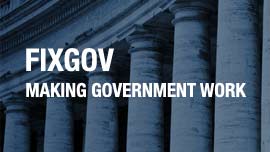
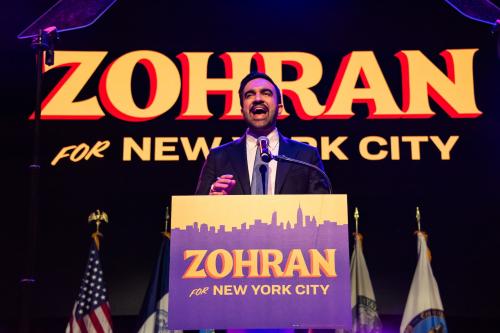
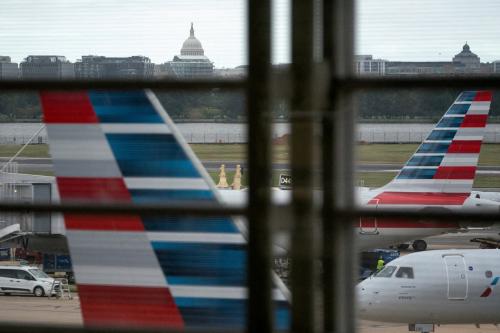
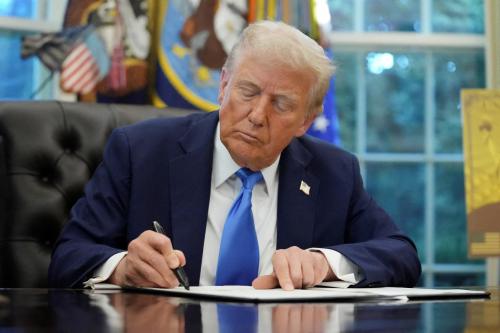

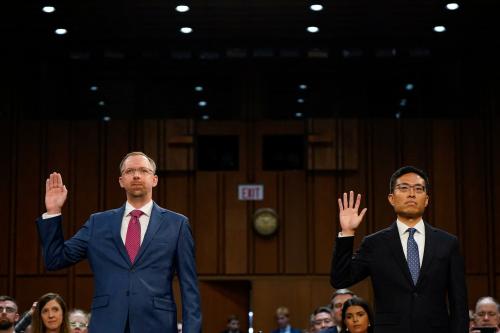
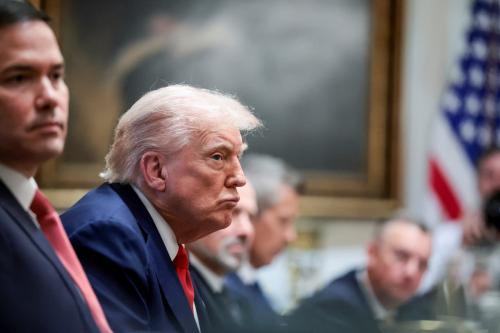

Commentary
Nominees on the run: An early outlier in Trump’s second term
November 24, 2025